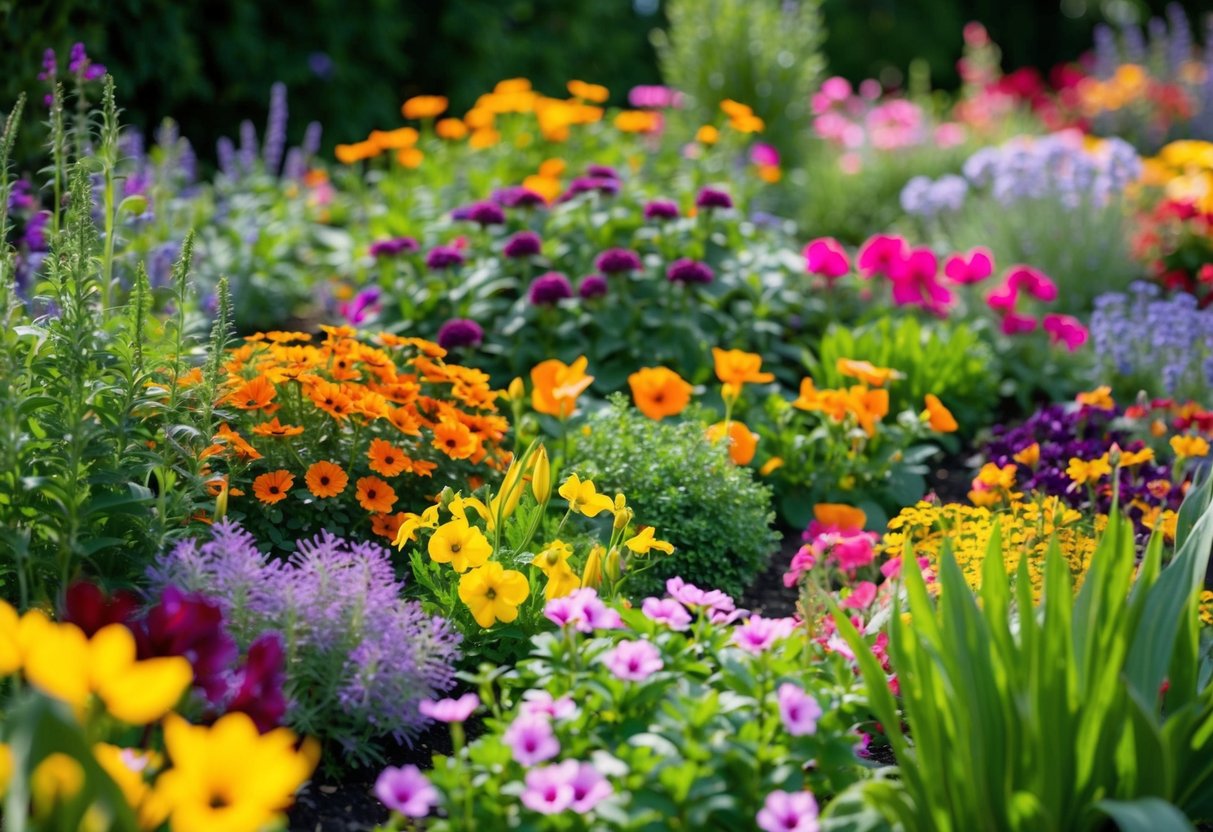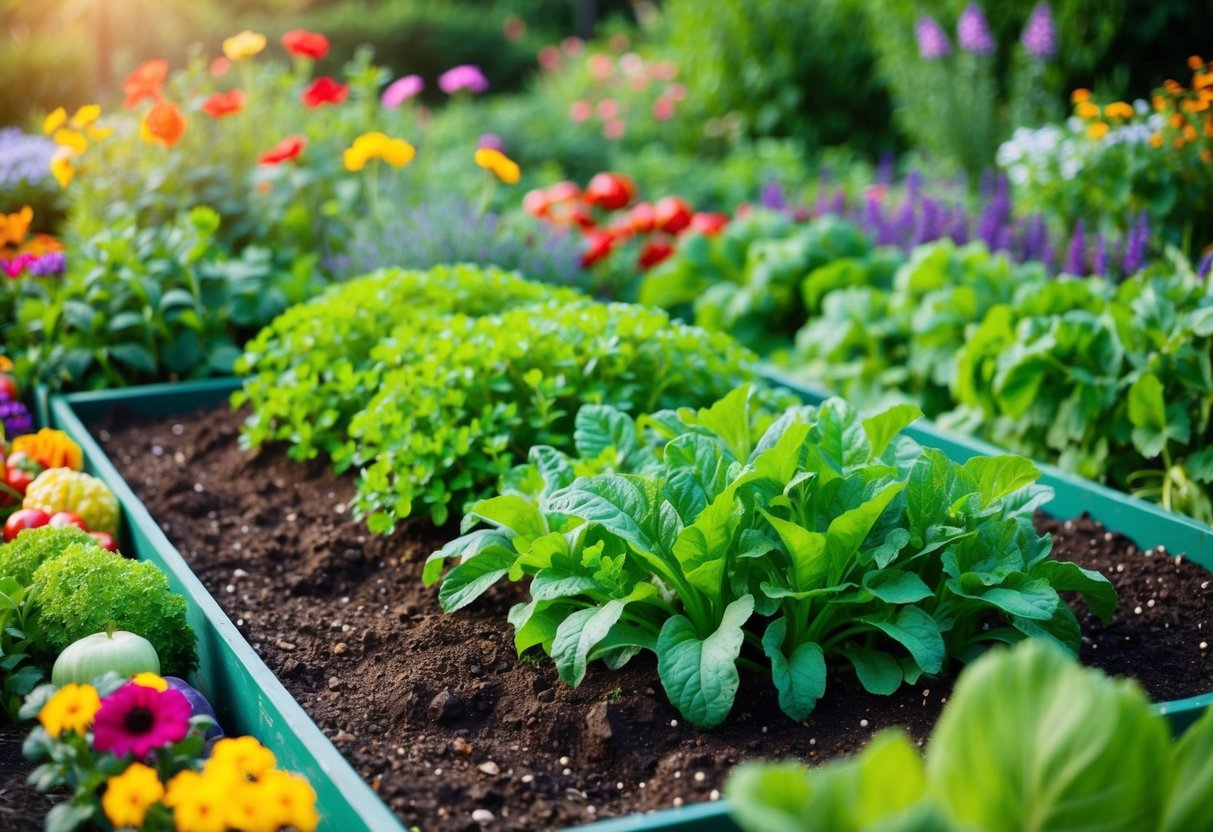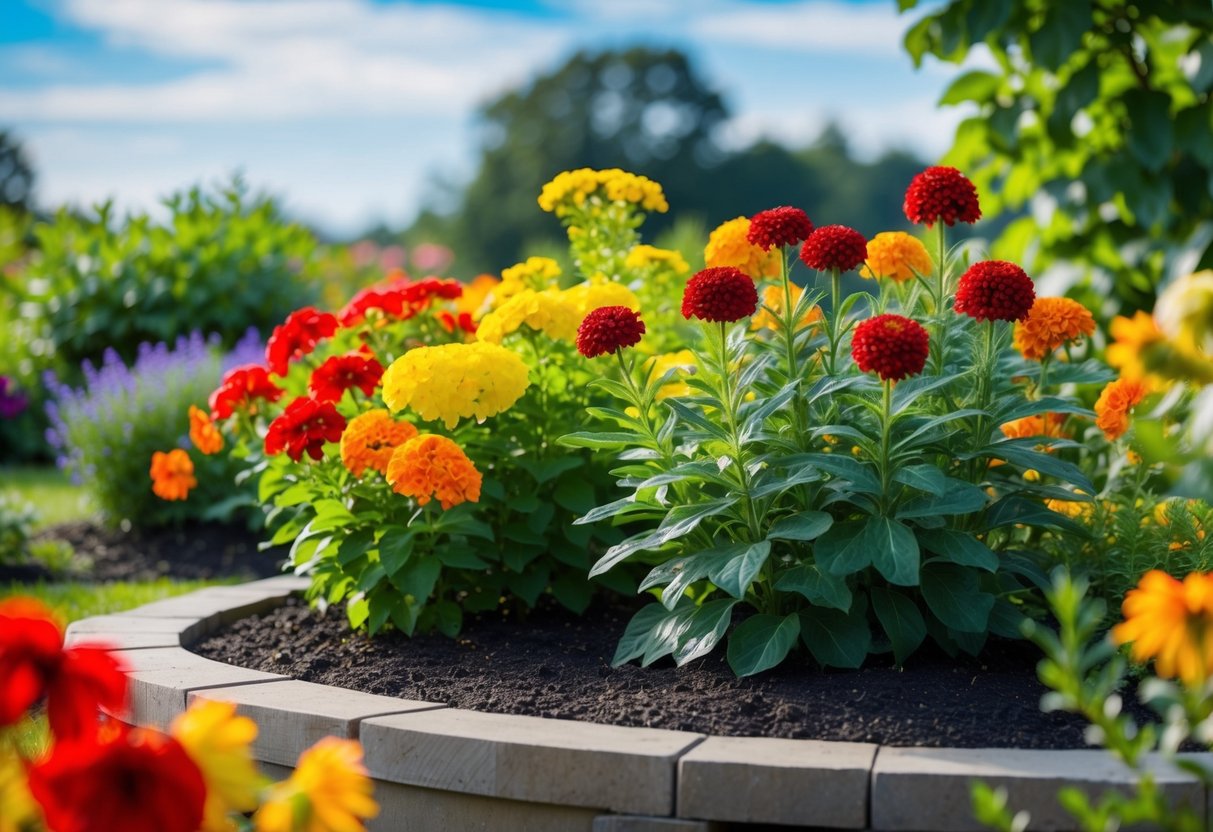What is the Best Color for a Garden Bed? Tips for a Vibrant Outdoor Space
Choosing the best color for your garden bed can transform your outdoor space into a vibrant paradise. For an eye-catching garden design, consider selecting colors that complement or contrast with each other on the color wheel. This approach will make your flower beds pop and bring harmony to your garden.

When deciding on colors, think about the type of garden bed you’re planting. For instance, raised garden beds may benefit from the use of multiple plant combinations to add depth and interest. Using analogous colors, which are next to each other on the color wheel, such as a mix of reds and oranges or blues and greens, can create a soothing effect.
Consider the background color of your space, too, whether it’s a fence or house siding. A good garden color scheme takes these elements into account, helping the plants stand out even more. You can learn more about using a color wheel to choose plant colors at Proven Winners. This adds depth to your garden, making it a visual delight.
Choosing the Right Color Palette

When planning your garden bed, picking the perfect color palette is key. Considering how colors work together can make your garden either pop with vibrancy or offer a serene retreat. Let’s explore some crucial aspects of selecting colors.
Understanding the Color Wheel
The color wheel is a helpful tool for choosing colors that look good together. It includes primary, secondary, and tertiary colors. Colors that are next to each other, known as analogous colors, provide a harmonious look. Think of pairs like red and orange or blue and green.
Complementary colors are opposite each other on the wheel, like yellow and purple. These combinations are vibrant and eye-catching, perfect for creating standout features in your garden. Understanding these concepts will help you create a balanced and appealing color scheme.
Neutral versus Bright Colors
Neutral colors such as white, gray, and beige can serve as the backdrop in your garden. They help highlight bolder colors and are great for calming spaces. Bright colors, like red and yellow, add energy and excitement.
These colors draw attention and can be used to feature specific areas or plants. If you prefer a more subtle look, stick to neutral tones. A balance of both neutral and bright colors can provide depth and interest in your garden design.
Harmonizing with Complementary Colors
Using complementary colors can make your garden visually dynamic. Pair colors like blue and orange or green and red for a striking effect. These color pairs create contrast, making each hue stand out.
For a soothing garden setting, consider using cool colors like blues and greens. Warm colors, such as reds and yellows, bring warmth and vibrancy. By combining these colors thoughtfully, your garden will become a visually appealing space that reflects your personal style.
Selecting Plants for Your Garden Bed

Choosing the right plants for your garden bed involves mixing colors, textures, and plant types to create a vibrant and cohesive look. You’ll want a balance between long-lived perennials and seasonal annuals, while also considering the visual appeal of foliage and the practical benefits of edible plants.
Perennials and Annuals
Perennials and annuals each bring unique qualities to your garden. Perennials like lavender, daylilies, and asters bloom year after year, offering lasting color and structure. They’re low-maintenance once established, which makes them ideal for gardeners who prefer a stable, long-term setup.
Annuals, on the other hand, burst into vibrant colors for just one season. This allows you to experiment with different looks each year. Popular choices include marigolds and petunias, adding variety and a splash of color among your perennials.
When selecting between perennials and annuals, think about your garden’s sunlight exposure. Some perennials, such as daylilies, love full sun, while others might thrive in partial shade.
Foliage and Texture
Besides colorful blooms, foliage and texture play a crucial role in your garden’s appeal. Incorporating plants with unique leaves or interesting growth habits can add depth. Consider mixing different leaf shapes, colors, and sizes.
Plants like ferns provide lush, green fronds that contrast beautifully with flowering plants. Grasses and bamboo add vertical interest and sway gently in the breeze. Choose foliage with varying textures to capture attention, even when flowers aren’t in bloom.
Different shades of green, like chartreuse or deep forest, can also tie the space together. Use foliage to frame your flowers or fill gaps, keeping the garden looking full and lively.
Incorporating Edibles
Adding edible plants brings practicality and more variety to your garden bed. Herbs like basil and thyme not only offer culinary benefits but also produce fragrant leaves and small flowers. They require minimal space and are often easy to care for.
Fruits and vegetables like cherry tomatoes or strawberries can be grown alongside flowers. They offer attractive blooms and the bonus of fresh produce. Consider planting them near the front of the bed for easy access.
Mixing edibles with ornamentals gives your garden both beauty and function, turning it into a living pantry. This can be particularly appealing if you’re looking to maximize space while maintaining aesthetic appeal.
Optimal Materials for Raised Garden Beds

Picking the right materials for your raised garden beds can make all the difference in their durability and effectiveness. Certain materials, like rot-resistant woods and alternative options, can offer great benefits. Proper drainage features are also crucial to prevent water buildup.
Choosing Durable Woods
When selecting wood for your garden beds, cedar wood is a strong choice. It is naturally rot-resistant, which means it will last longer than many other types of wood. Cedar can withstand various weather conditions, making it an ideal option for outdoor gardening.
Brands like Greenes Fence Cedar Raised Garden Bed offer easy-to-assemble kits that are perfect for beginners. You might also consider cypress or redwood, which also resist decay. These woods help ensure that your garden bed stays robust and attractive over time.
Alternative Materials
If wood isn’t your first choice, you have several alternatives. Galvanized metal is a popular option due to its durability and modern aesthetic. It withstands harsh weather and doesn’t rot like wood. Plus, its reflective surface can help keep the soil warm.
The City Pickers Patio Raised Garden Bed is an example of a plastic option that is portable and practical. This style suits urban environments where space might be limited. Another option is a fabric liner, used in beds like the Vegepod Raised Garden Bed, which allows for breathability and flexibility.
Importance of Drainage Features
Effective drainage is key to maintaining healthy plants. Without it, your plants can suffer from waterlogged roots, leading to rot and disease. Ensuring that your raised garden bed has drainage holes is vital.
Options like the Best Choice Products Raised Garden Bed often come with built-in drainage features to facilitate proper water flow. You can also use a fabric liner to help manage moisture levels. It prevents too much water from soaking into the soil, promoting a healthier growing environment. Prioritizing drainage will help your garden thrive over time.
Raised Garden Bed Fundamentals

When starting with raised garden beds, it’s important to understand assembly practices and regular maintenance. Attention to adequate drainage ensures your plants stay healthy and thriving.
Assessing Assembly and Maintenance
Choosing the best raised garden beds involves evaluating assembly requirements. Many beds are available in wood, concrete, or stone frames. Wood is popular due to its natural aesthetic and flexibility.
Make sure all parts fit well during assembly to avoid future issues.
Maintenance involves regular checks for signs of rot or rust, especially if you choose materials like wood. Keep your gardening space clear of weeds, which can compete with your plants for nutrients. Applying a layer of cardboard at the bottom of the bed helps minimize weed growth and can invite beneficial earthworms.
Maximizing Plant Health with Adequate Drainage
Proper drainage is crucial for root health. Raised garden beds often need additional setup to ensure water can escape freely. Consider elevating the bed slightly or drilling holes if it lacks adequate drainage.
Soil choice plays a role in drainage as well. A mix of soil and organic matter can improve water flow and prevent root rot. Make sure the beds are not filled too high with soil to allow some space for water to drain.
Design Considerations for Unique Garden Styles

When designing unique garden styles, it’s important to think about how different design elements can enhance your garden’s look and functionality. The height of elevated beds and the use of textiles can help create depth and interesting textures in your space.
Creating Depth with Elevated Beds
Elevated garden beds are a great way to add layers to your garden. By using elevated planters, you can vary the height of your garden beds for a more dynamic look. This height variation also aids in creating better drainage, which is crucial for ensuring your plants thrive.
When selecting materials, weather-resistant cedar is a popular choice due to its durability. The depth of the planter is essential, especially if you plan to grow deep-rooted plants like tomatoes or carrots. Ensure you have enough planting depth for the roots to grow.
Potting soil is crucial as it provides the necessary nutrients for plants. Choosing the right soil mix enhances plant growth and can be tailored for specific plant needs. Consider a self-watering system if you want less maintenance and healthier plants.
Landscaping with Garden Textiles
Using garden textiles like landscaping fabric helps reduce weed growth and moisture loss. It’s a practical addition under your elevated planters. This fabric ensures your garden retains moisture while preventing unwanted plants from taking root.
For those considering a more varied texture, different garden textiles offer options. They can add visual interest alongside functional benefits. These fabrics, combined with your plant choices, can emphasize specific areas of your garden.
The combination of layout and material choice plays a significant role. Whether you choose a sophisticated or casual look, textiles can support your style and improve the garden’s performance. Plus, they often require minimal upkeep once installed.







